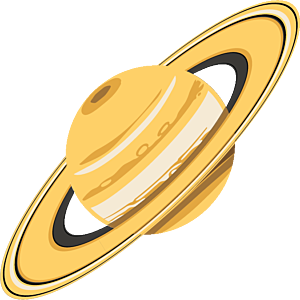The Downlink • Dec 20, 2024
Are we there yet?
Space Snapshot

Perseverance has made it to the top of the Jezero Crater rim. The NASA rover has been climbing up the inside of the Mars crater for the past several months, ascending 500 vertical meters (1,640 vertical feet) at grades as steep as 20%. The rover and its team will take a much-deserved break before Perseverance begins its exploration of a new area that is home to different kinds of rock from those within the crater. Pictured: Perseverance’s first view over the crater rim. Image credit: NASA/JPL-Caltech.
Fact Worth Sharing

Climbing Jezero Crater has not been easy for Perseverance or its team. No other rover has faced terrain this steep and slippery. Luckily, the mission team is resourceful and has come up with creative solutions, like driving the rover up some hills backward to increase traction.
Mission Briefings


Io’s volcanoes may be fueled by pockets of magma. New data from NASA’s Juno spacecraft suggest that Jupiter’s volcanic moon Io may not have a subsurface ocean of magma as previously thought. Instead, its active volcanoes — the most numerous of any body in the Solar System — may be fueled by individual chambers of magma under the moon’s crust. Pictured: An artist’s impression of Io’s subsurface magma. Image credit: NASA/Caltech-JPL/SwRI.

The age of Saturn’s rings remains unclear. Although recent research suggested that the gas giant’s iconic rings may have formed within the last 400 million years, a new study has offered an alternative explanation. The observation that the rings are relatively “clean” of micrometeoroid debris may not be because they’re young, but because their composition makes them resistant to this kind of “pollution.”

Tech funded by The Planetary Society will launch to the Moon next month. PlanetVac is a new sample return technology funded in part by Planetary Society members. In January, it will launch aboard Blue Ghost, a private lunar lander built by Firefly Aerospace. The mission to the Moon, funded by NASA as part of the agency’s Commercial Lunar Payload Services program, will use PlanetVac to collect a sample of lunar regolith. Learn more about the technology and the mission taking it to the Moon.

NASA has released new plans for Mars science and its Moon-to-Mars architecture. NASA recently announced two new strategy documents: a plan for the next 20 years of scientific Mars exploration, and a roadmap for the agency’s long-term plans for lunar exploration in preparation for future crewed missions to Mars.

The Artemis Accords now have 51 signatories. Panama, Austria, and Thailand all recently signed the Accords, bringing the total number of participating nations to 51. The Artemis Accords, initiated by the United States in 2020, are a set of best practices in spaceflight in areas ranging from sharing scientific data to utilizing space resources.
From The Planetary Society


Get ready for another great year in space! Get your calendars out now and start filling in dates, because there’s a lot to look forward to in 2025. Our calendar of space events lists everything coming up in the next year, from celestial spectacles like eclipses and meteor showers to exploration milestones like launches and flybys. Pictured: Saturn’s rings will appear edge-on like this from March to November of 2025. Image credit: Erich Karkoschka/University of Arizona/NASA/ESA.

Mars spiders and space policy myths — the latest on Planetary Radio. If “Mars spiders” sound intriguing to you, listen to this week’s episode of Planetary Radio to learn all about the strange Martian features and how they form. Plus, catch the latest episode of Planetary Radio: Space Policy Edition to hear a discussion about whether the concept of presidential leadership in space policy is all just a myth.

The Congressional Planetary Science Caucus has spoken up for space. As part of the fiscal year 2025 budget negotiations, 22 Members of Congress signed a bipartisan letter supporting a higher topline budget for NASA and addressing the challenges the agency is facing. The Planetary Science Caucus is an informal group that unites Members of Congress who support space science, research, and exploration, and was rechartered this year with the support of The Planetary Society. If you want to take your own action as a space advocate, sign up for our annual Day of Action, taking place in Washington, D.C. on March 24, 2025.

Coming up in the Planetary Society book club. On Jan. 7, book club members can join a live virtual Q&A with David Brin and Stephen Potts, the editors of “Project Solar Sail.” Then, in January book club members will be reading “Is Anyone Listening?” by Denise L. Herzing, a book about dolphin communication and how it connects to groundbreaking work on animal languages. We’ll explore what the search for extraterrestrial intelligence (SETI) can learn from all of this. All of this is available to Planetary Society members in our digital member community. Not yet a member? Join today.

It’s been a big year for The Planetary Society. In 2024, we rallied our members to protect NASA science missions, provided grants to researchers at the cutting edge of space science and technology, launched a book series to teach kids about space, educated Congress about the value of Venus and Moon research, and so much more. Take a look at everything we accomplished with the support of our members in our 2024 impact report.

The work isn’t over yet! Help continue a legacy of excellence. Your gift today will help push our mission forward — to advance exploration, grow our community, and build a strong Planetary Society. Your support is essential. Now's the time to give since every donation will be DOUBLED up to $100,000, so your impact goes even further. Let’s continue creating space for everyone — together!
What's Up

Look for Venus shining super-bright in the early evening west, with Saturn high in the eastern skies. Very bright Jupiter rises in the east near sunset and crosses the sky over the course of the night, with reddish Mars rising in the east later in the evening. On Dec. 25, Mercury will be at its greatest western elongation, at the highest above the horizon in the pre-dawn sky that it will get for this viewing period.
Carl Sagan. Bill Nye. You.

The Planetary Society was co-founded by Carl Sagan to give you an essential role in space exploration. Not already a member? Join today! When you become a member, you join a global community of space advocates who make a critical difference in supporting a future full of space exploration. Join CEO Bill Nye and become part of the world's most effective independent space advocacy nonprofit!
Need some last-minute gift ideas?

Our 2024 holiday gift guide includes all kinds of gift ideas for people who love space. From games to clothing to activities and more, we’ve got an array of delightful cosmic gifts to choose from — including these postcards featuring images from the James Webb Space Telescope’s first year of observing. Image credit: Startorialist.
Editor's note
Editor’s note: The team behind the Downlink is taking some time off around the holidays, and won’t be producing this newsletter for the next two weeks. We’ll be back on Jan. 10. See you in the new year!
Wow of the Week

You don’t have to celebrate Christmas to appreciate the holiday cheer of this star cluster. The image shows the star cluster NGC 2264, known as the “Christmas Tree Cluster.” The bright stars were captured by NASA’s Chandra X-ray Observatory, and the green tree shape was captured by astrophotographer Michael Clow from his telescope in Arizona. Image credits: X-ray: NASA/CXC/SAO; Optical: Clow, M.; Image Processing: NASA/CXC/SAO/L. Frattare and K. Arcand.
Send us your artwork!
We love to feature space artwork in the Downlink. If you create any kind of space-related art, we invite you to send it to us by replying to any Downlink email or writing to connect@planetary.org. Please let us know in your email if you’re a Planetary Society member!


 Explore Worlds
Explore Worlds Find Life
Find Life Defend Earth
Defend Earth

